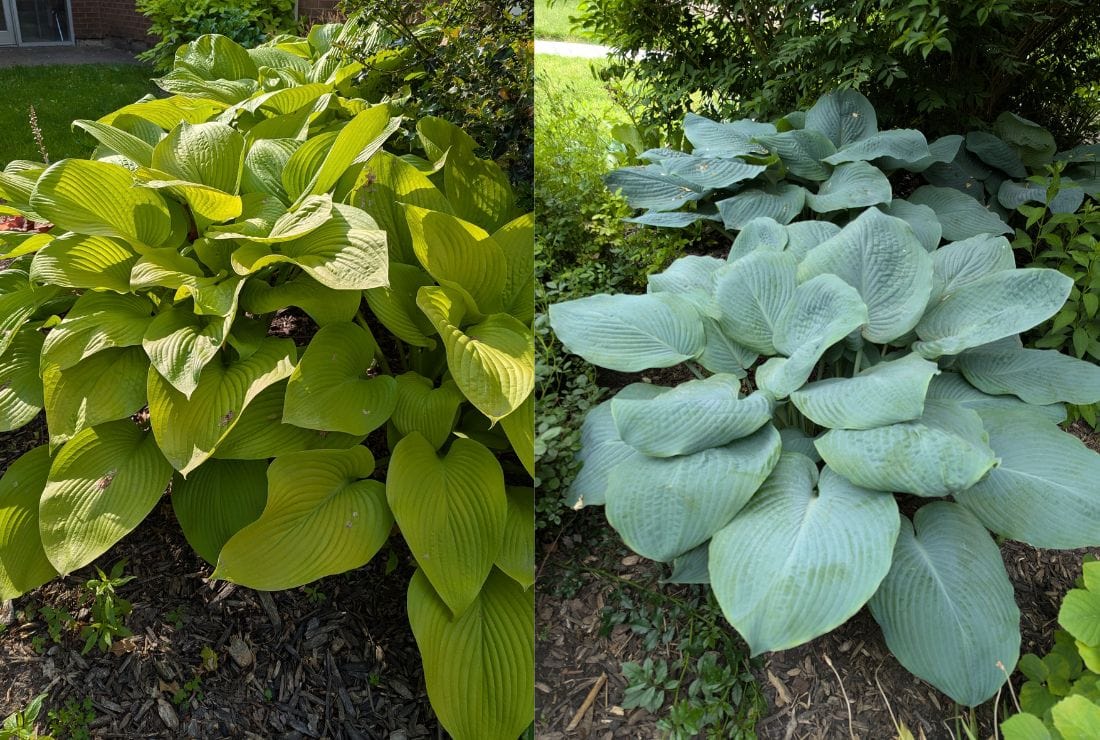Shady gardens are always a bit more challenging to design. After all, it does greatly limit your choices of plants.
One sure way of getting the full look is the use of hostas. They can make a hard-to-landscape area a lush paradise.
Hostas are beloved by gardeners for their lush foliage and ease of care. While there are thousands of varieties ranging in size, colour and texture, huge hostas that can reach several feet in height and width, also provide a striking architectural presence to any landscape.
These gentle giants can transform shady corners into vibrant focal points, offering both beauty and resilience.
Some giant hostas can grow to an impressive four to five feet wide and three to four feet tall, with leaves measuring more than a foot long.
Their bold foliage, which comes in a variety of greens, blues and golds, makes them ideal for creating structure and contrast in shade gardens. They also provide much texture to the landscape.
Their thick, quilted-looking leaves are not only visually appealing but also more resistant to pests like slugs. When massed together, giant hostas can mimic the look of tropical plants, providing a lush, almost jungle-like atmosphere in temperate climates.
Hostas thrive in partial to full shade, though some varieties — especially those with yellow or chartreuse foliage — tolerate more sunlight.
Giant hostas prefer rich, well-drained soil with consistent moisture. Mulching helps retain water and suppress weeds, while compost improves soil structure and fertility.
It’s important to give huge hostas space to grow. These plants take a few years to reach their full size, but when they do, they have earned a place of honour. Gardeners should plant them at least three to five feet apart to allow for mature spread.
For visual interest, contrast large-leaved hostas with fine-textured plants or use them near water features, where their reflection enhances their beauty.
When space allows, a collection of giant hostas in different hues creates a stunning tapestry of colour and texture.
There are some amazing large leaf varieties to choose from. One of the fastest-growing varieties is one called Empress Wu, with a blue-green leaf that will grow four feet high and six feet wide. Each leaf is over one foot in diameter.
When planted surrounded by plants with fine textures such as ferns, the leaves will appear even larger.
A more recent sport (offspring) of Empress Wu hosta is Wu-La-La. Like Empress Wu, Wu-La-La grows four to six feet high and even wider, but has more distinct markings on its leaves. The main portion of the leaf is blue-green but has a bright lime to apple-green margin.
One hosta that I use a lot in designs is Sum & Substance, which is lemon-yellow in colour and grows two to three feet tall and three to four feet wide. I love how the bright coloured leaves illuminate a darker, shady area.
T-Rex hosta, with green leaves, generally grows six to seven feet wide and two to three feet high. Its leaves are some of the largest, each measuring up to 18 inches long.
Some large growing blue leaf hostas are Elegans and Big Daddy. There are many different varieties to choose from.
Huge hostas are more than just big plants — they’re statement pieces that elevate the design of shade gardens. With their impressive size, durability and aesthetic versatility, these perennial powerhouses offer years of enjoyment with relatively little upkeep.
Whether you’re a seasoned gardener or a newcomer, adding a few giant hostas to your landscape will bring bold beauty and peaceful greenery to your outdoor space.
Joanne Young is a Niagara-on-the-Lake garden expert and coach. See her website at joanneyoung.ca











